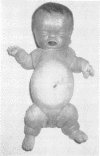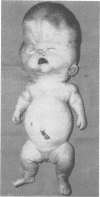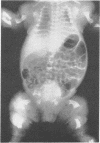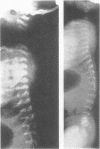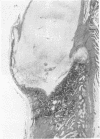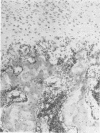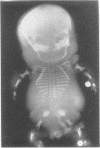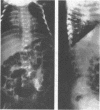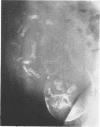Abstract
A review of the radiographs of children previously classified as achondroplasiacs revealed six thanatophoric dwarfs. The main radiological differentiating features were the greater degree of shortening of the long bones, including the fibula, the curvature of the femora, the very small size of the thorax and, particularly, the very narrow ossified elements of the vertebral bodies. Perhaps the most important aspect of differential diagnosis lies in recognition in utero. The reported association with clover-leaf deformity of the skull in sibs provides the strongest evidence for genetic differentiation from classical achondroplasia. More evidence might be obtained by a widespread search through hospital radiological museums.
Full text
PDF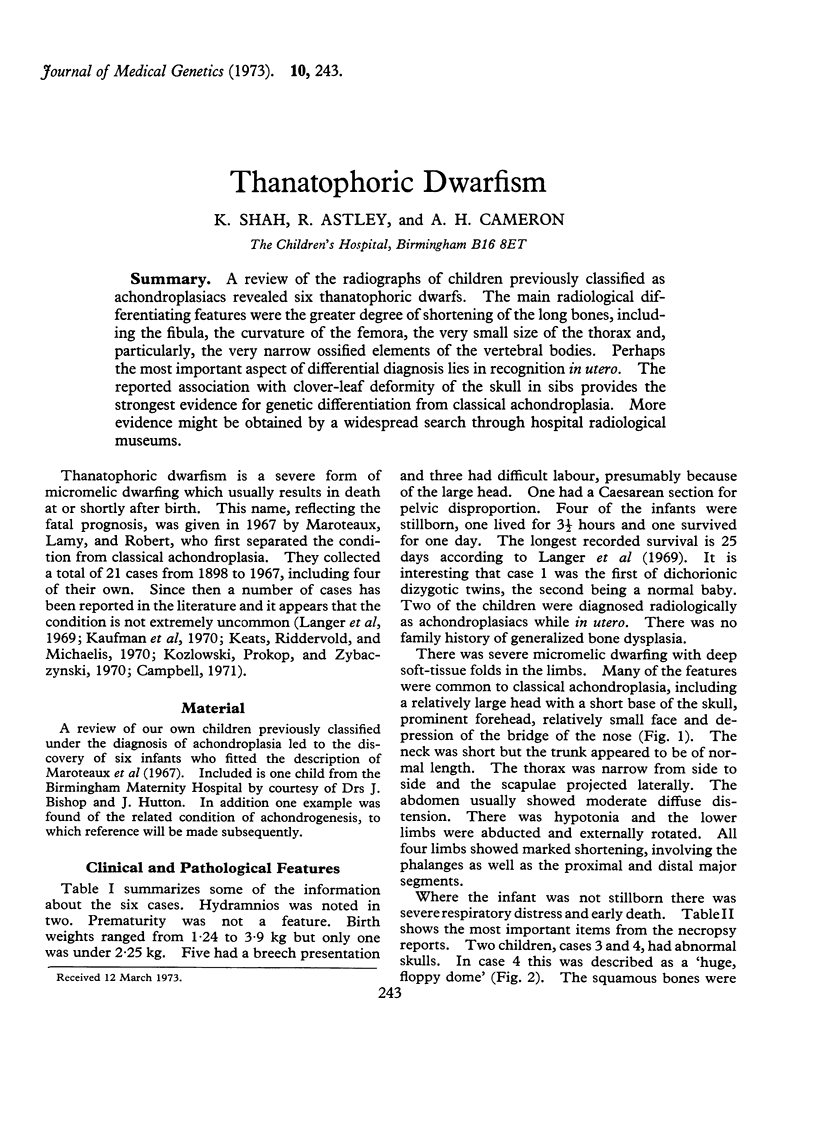
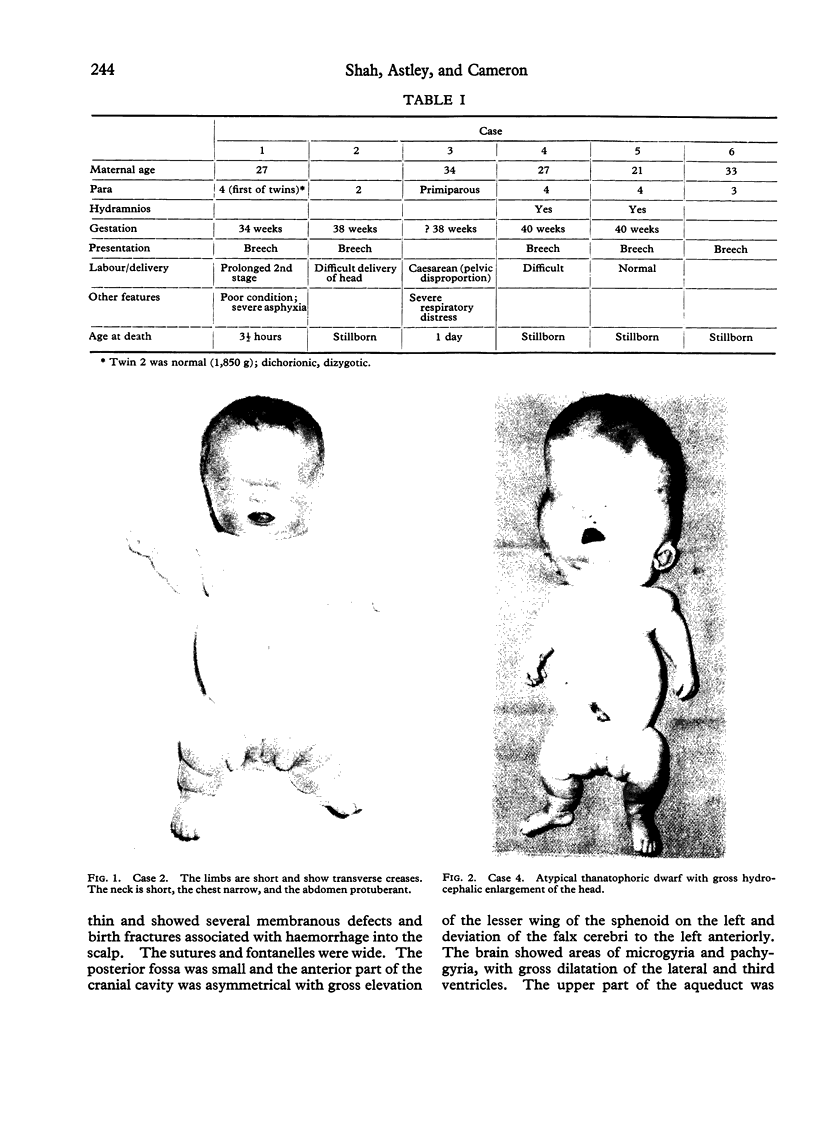
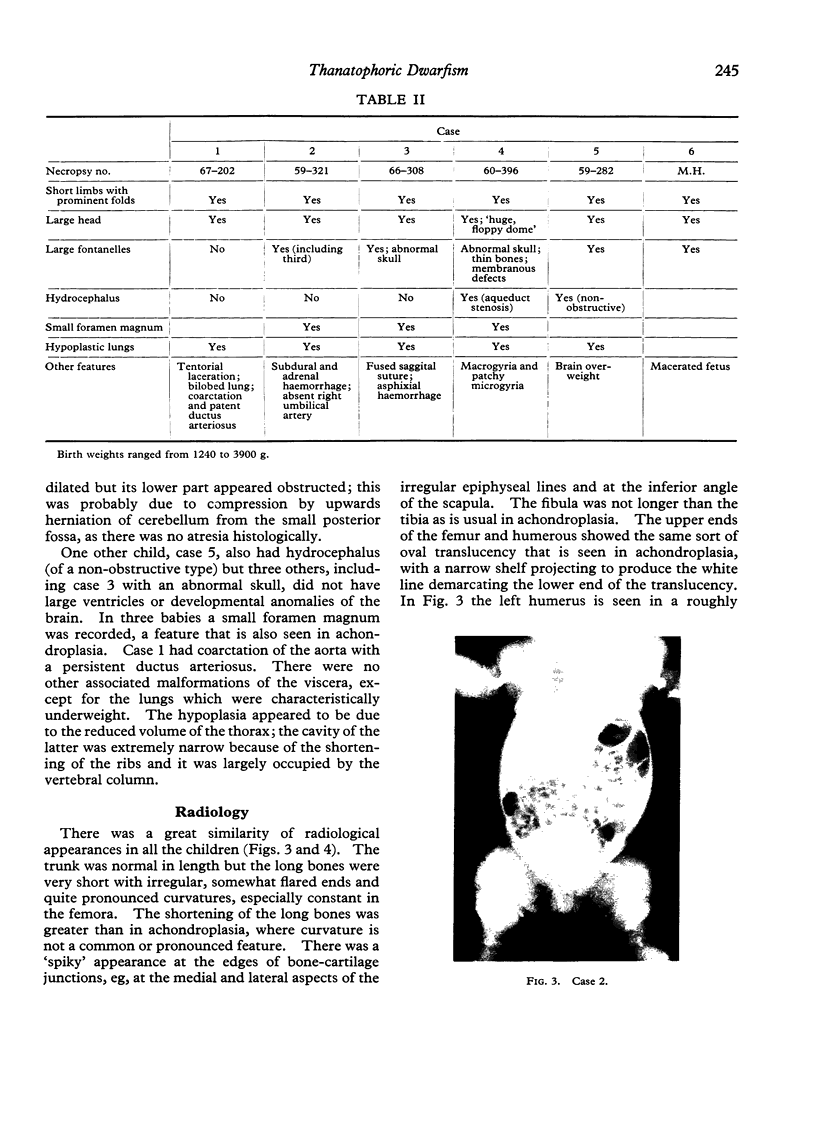
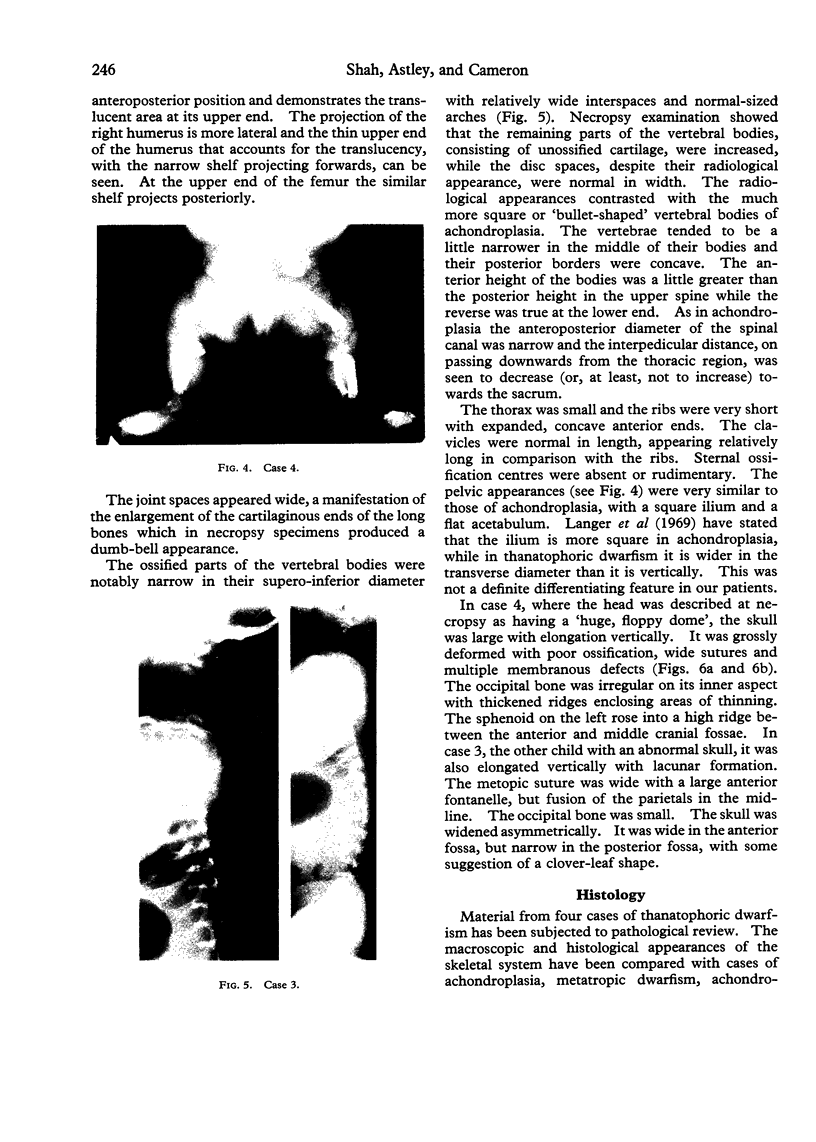
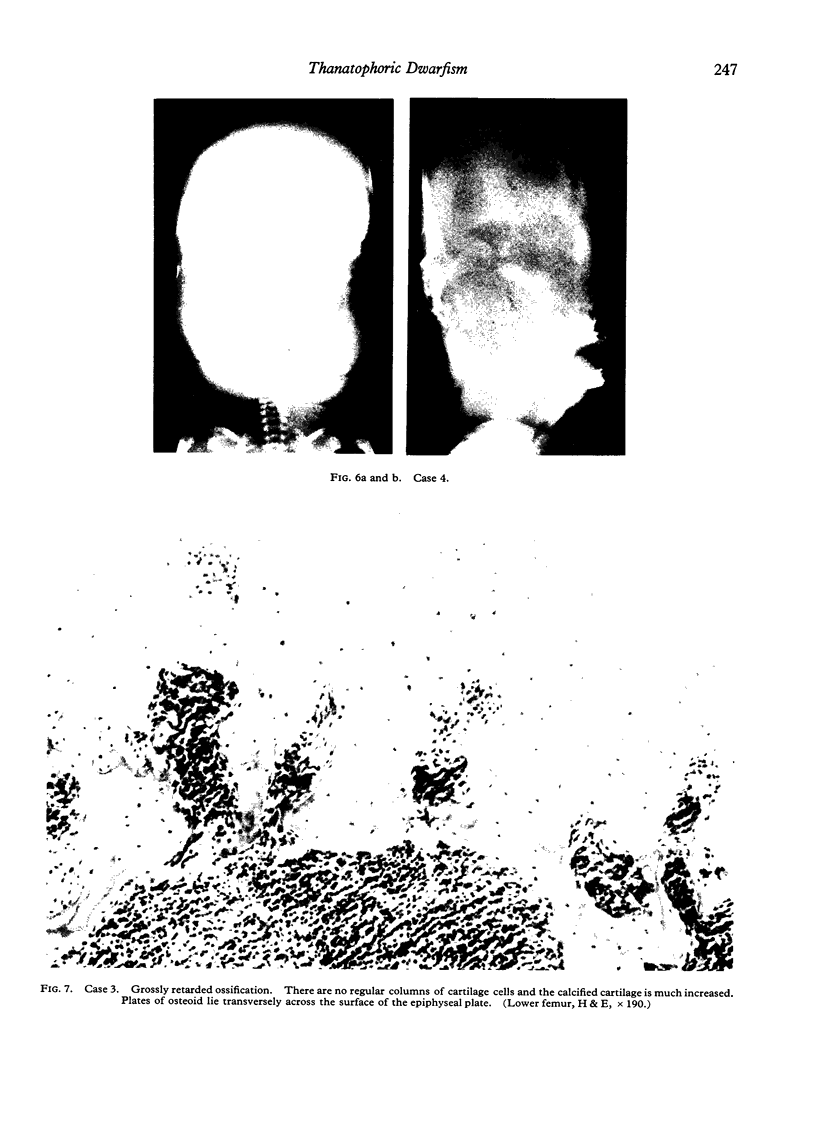
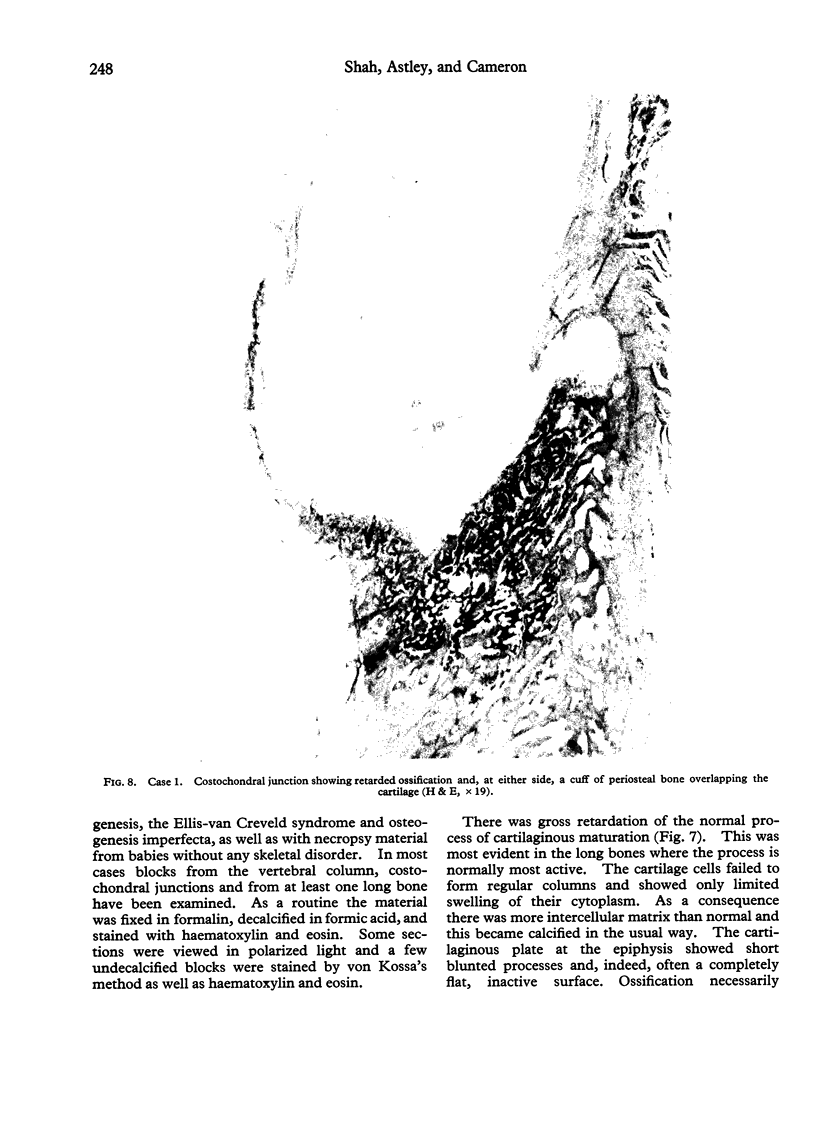
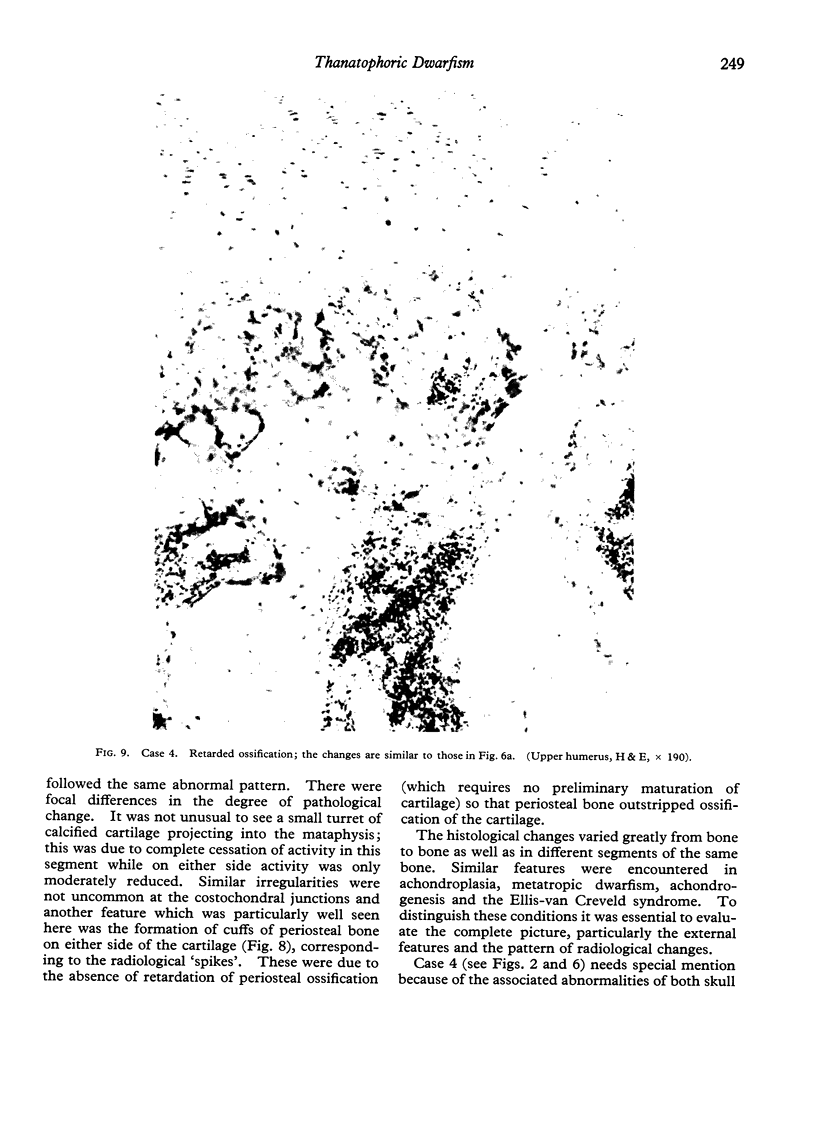
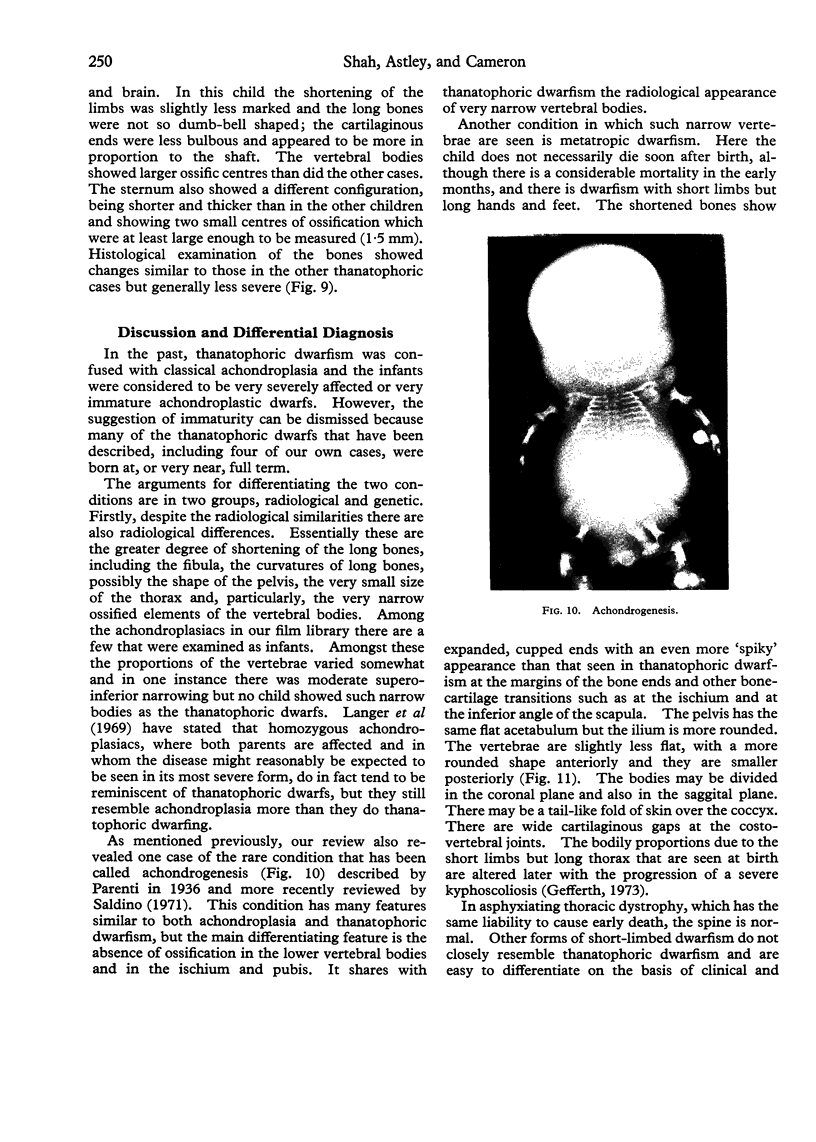
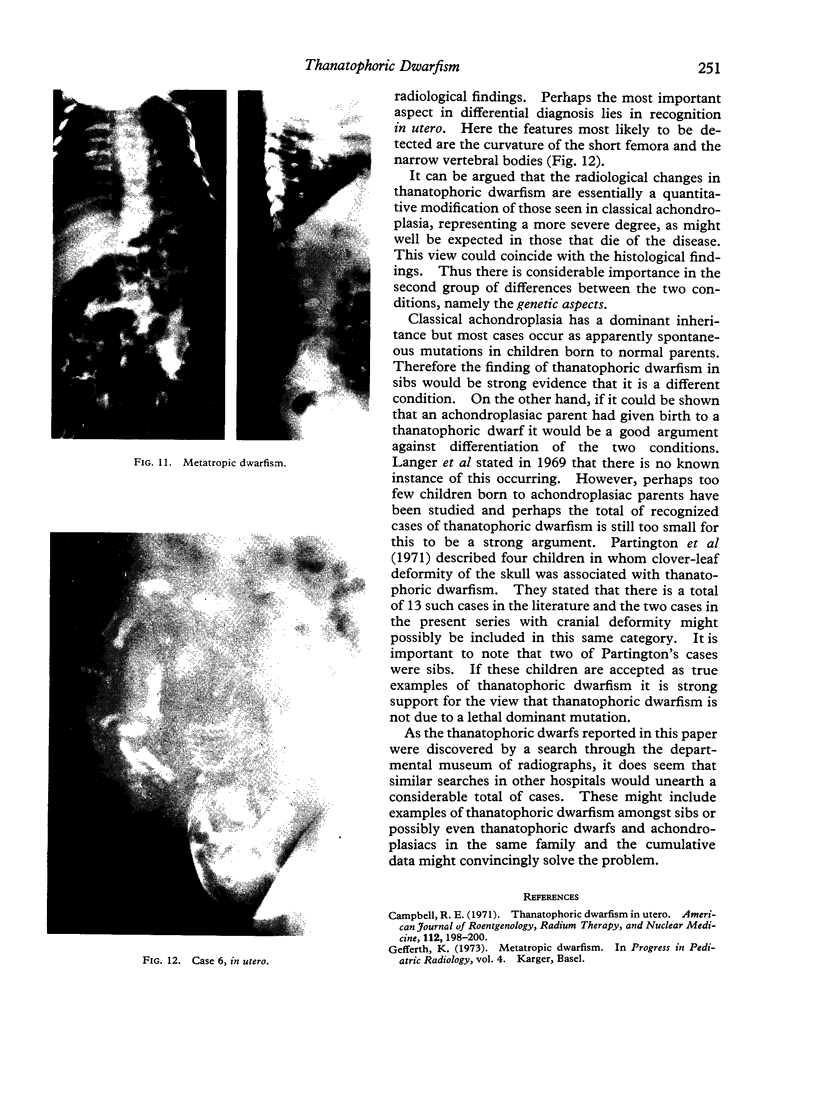
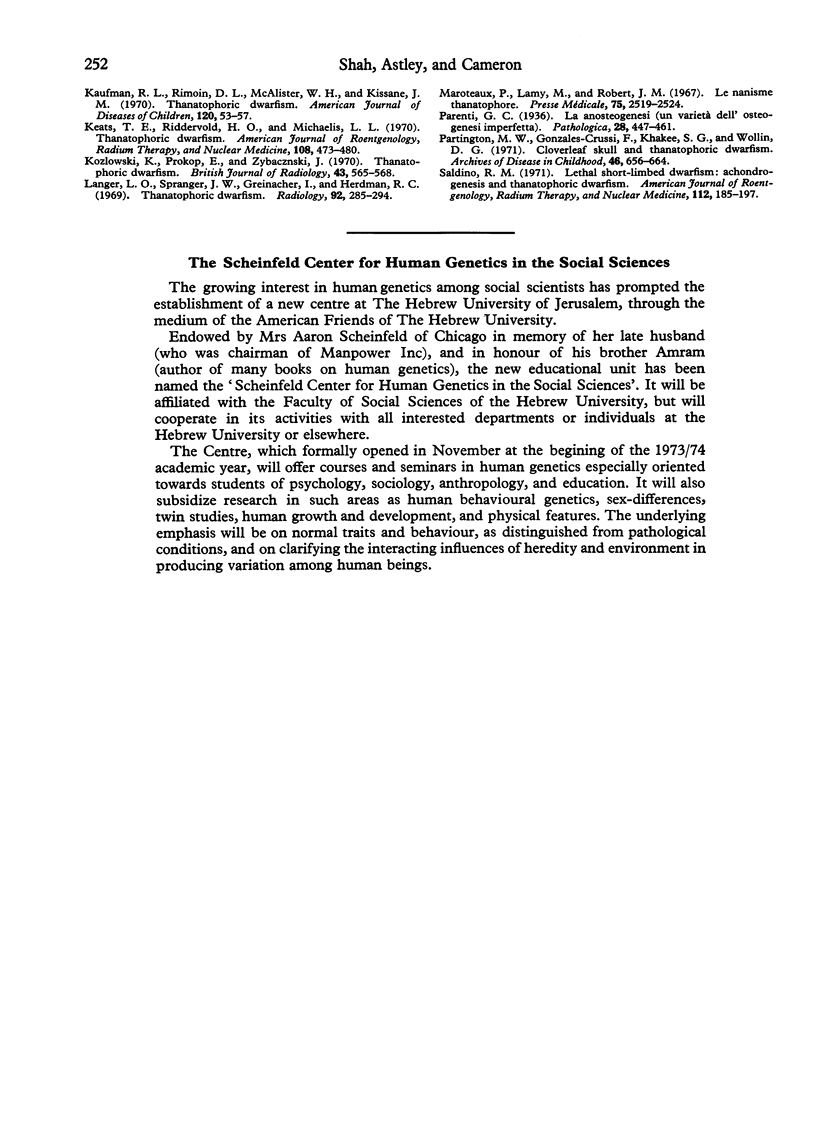
Images in this article
Selected References
These references are in PubMed. This may not be the complete list of references from this article.
- Kaufman R. L., Rimoin D. L., McAlister W. H., Kissane J. M. Thanatophoric dwarfism. Am J Dis Child. 1970 Jul;120(1):53–57. doi: 10.1001/archpedi.1970.02100060087013. [DOI] [PubMed] [Google Scholar]
- Kozlowski K., Prokop E., Zybaczynski J. Thanatophoric dwarfism. Br J Radiol. 1970 Aug;43(512):565–568. doi: 10.1259/0007-1285-43-512-565. [DOI] [PubMed] [Google Scholar]
- Langer L. O., Jr, Spranger J. W., Greinacher I., Herdman R. C. Thanatophoric dwarfism. A condition confused with achondroplasia in the neonate, with brief comments on achondrogenesis and homozygous achondroplasia. Radiology. 1969 Feb;92(2):285–passim. doi: 10.1148/92.2.285. [DOI] [PubMed] [Google Scholar]
- Maroteaux P., Lamy M., Robert J. M. Le nanisme thanatophore. Presse Med. 1967 Nov 22;75(49):2519–2524. [PubMed] [Google Scholar]
- Partington M. W., Gonzales-Crussi F., Khakee S. G., Wollin D. G. Cloverleaf skull and thanatophoric dwarfism. Report of four cases, two in the same sibship. Arch Dis Child. 1971 Oct;46(249):656–664. doi: 10.1136/adc.46.249.656. [DOI] [PMC free article] [PubMed] [Google Scholar]



